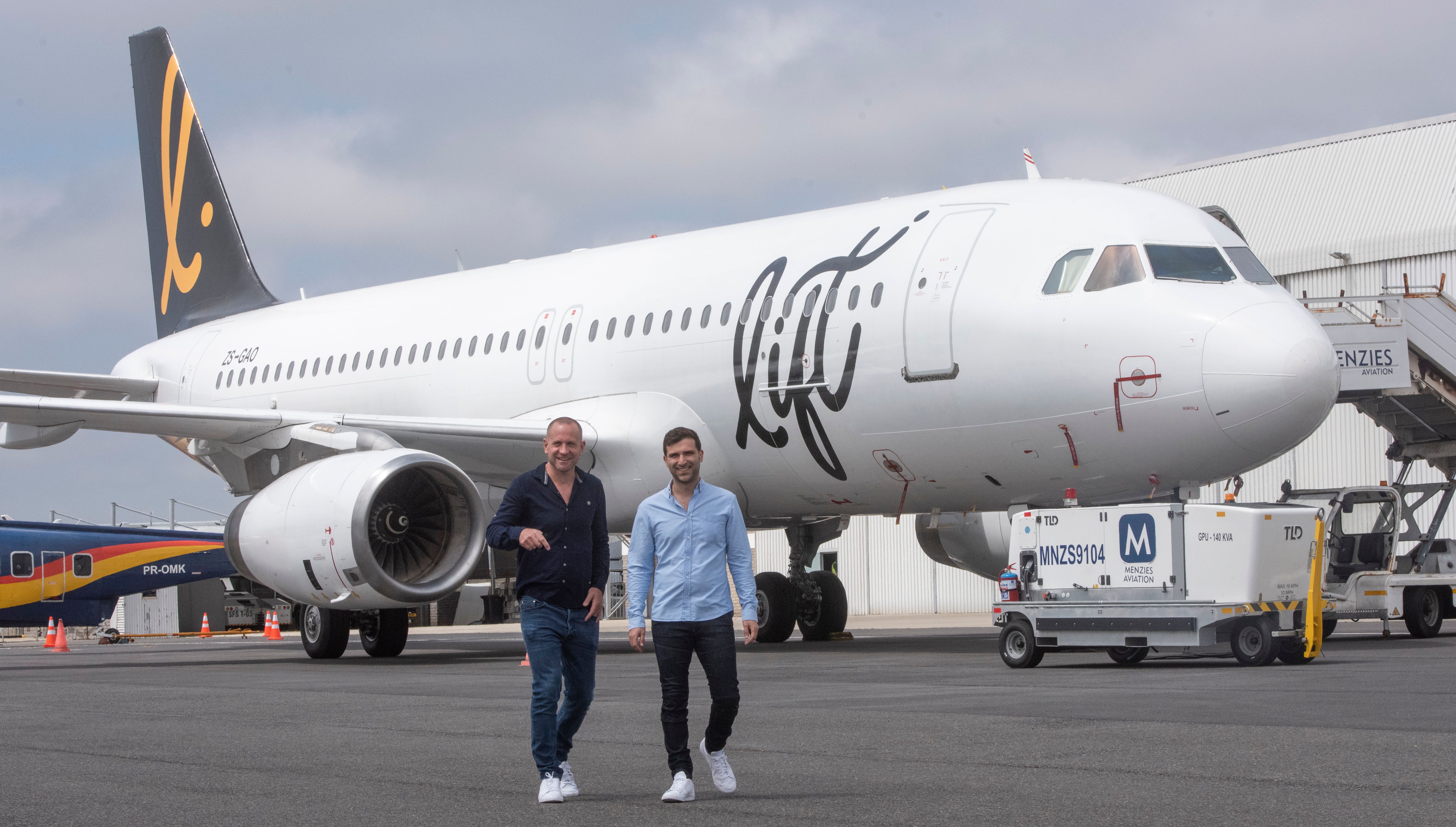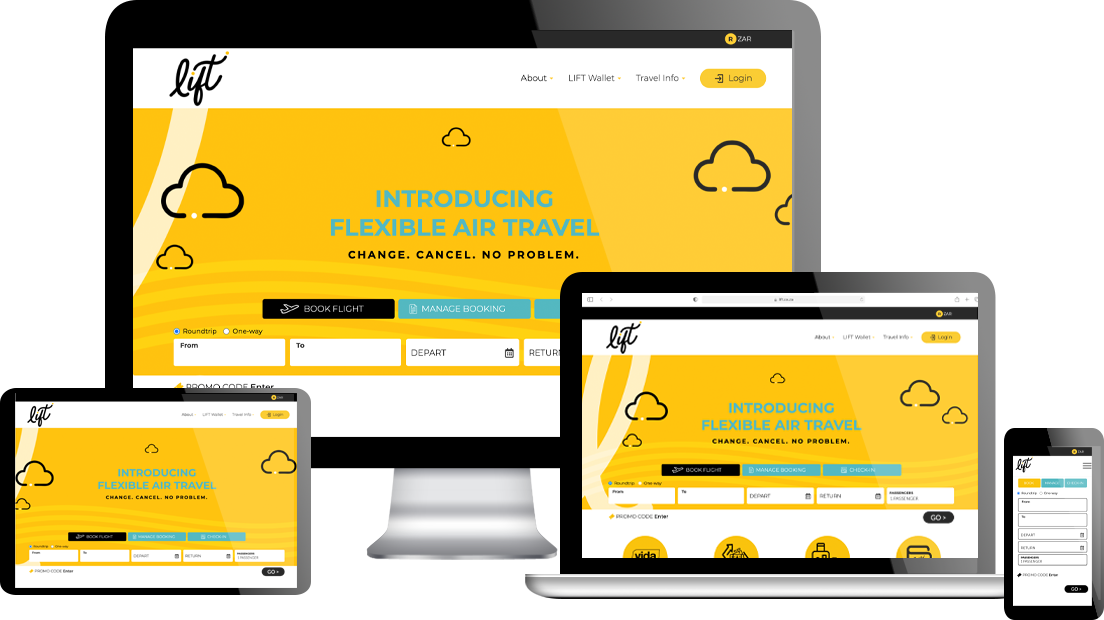Starting an airline is not an easy task. Most airline startups are two, three, or more years in the making before they take that momentous inaugural flight. For Lift, a startup airline in South Africa, waiting was not an option. From the moment the founders met and discussed starting an airline to the takeoff of the first flight, just 90 days passed.
Simple Flying chatted to CEO and co-founder Jonathan Ayache about this incredible startup journey. He reflected on how he got into aviation from his former position at a ride-hailing company.
“My background is not in aviation. I was at Uber for seven years but was leaving that part of my career behind me. I decided to go and pester Gidon Novick, who was previously the CEO and the founder of kulula.com, South Africa's first low-cost carrier. I wanted to ask him for his advice, and we chatted for a while, and he said, “I'm thinking about starting an airline, do you want to come to a meeting?” And I said yes. And then that kind of spiraled into me jumping in full time, knowing very little about the industry.”
Jon’s lack of experience has proven to be an asset to Lift in its early days. He describes the learning curve as ‘like drinking from a fire hose,’ but says that sometimes it helps to not have so many preconceptions.
“The less you know, the less is there to kind of sound the warning bells in your mind about what could go wrong.”
Less than three months to launch
Despite being in the middle of a pandemic, despite much of South Africa being under strict lockdown regulations, despite his lack of experience, Ayache and co-founder Novick attacked their startup plans with an incredibly aggressive timeline. Less than three months after their first meeting, they were preparing to take their first flight. But why the haste? Ayache told us,
“It was partly because COVID gave us in a really unique opportunity in South Africa at the time. SAA was not flying, and neither was Comair - two huge carriers that previously made up the bulk of South Africa's domestic market. And we saw this opportunity to launch and scale fairly quickly without them there.
“In addition to that, because so many aircraft were parked, and there was so much talent available, we were able to get really flexible operating leases, and hire some exceptionally talented people. This all coalesced, and the timing just made sense.”
Despite the short lead time, Ayache and Novick did a super job of getting this airline off the ground. Local engagement was high, not least because the airline threw the job of establishing its name out to the traveling public, and its start went smoothly, operating 90% on time performance with load factors frequently in the 90s.
The secret to Lift’s success
One of the key elements that has enabled Lift to launch so quickly is its outside-the-box thinking for its booking and payments system. Traditionally, airlines will opt for the GDS - Global Distribution System – which allows flights to appear on comparison sites, for travel agents to see their offers and for bookings to be made. But getting onto the GDS can be time-consuming and expensive and gives the airline very little control.
For a faster, more dynamic solution, Lift partnered with AeroCRS, an expert passenger services system provider specializing in cloud-based solutions. While other providers had given Lift a timeline of months to get set up, AeroCRS did everything in a matter of weeks.
Meir Hadassi Turner, Chief Executive Officer at AeroCRS, told Simple Flying it was all in a day’s work for this agile company. He commented,
“We’re used to aggressive timelines because our platform has been architected to deliver agility. It’s cloud-based, and our teams frequently onboard partners at a fast pace, in a structured and carefully thought-out way including delivering remote stakeholder training.
“We’re all about agility and collaborating with our partners. AeroCRS has a proven track of implementing our solutions in short timeframes, even with complex features. Airlines choose the AeroCRS solution because they can trust the team on implementation and delivery.”
AeroCRS provided the backbone for Lift’s launch, with software for passenger bookings, network distribution and for ongoing analytics to help the airline grow. Later in their journey, Lift went back to AeroCRS for a WhatsApp bot, letting customers book, change and answer questions via a chat app. The partnership continues to grow, and will no doubt see more innovation in the years to come.
Digital wallet for instant refunds
Thinking outside the box led to Lift’s implementation of a digital wallet. This tool puts control back in the hands of the passengers, letting them cancel, change or rebook their flight, with refunds paid instantly into the account. Ayache told us,
“The wallet that we developed is to facilitate real, seamless flexibility. You go online the same way as you would to manage your booking, you click cancel, and then instantly the money is in your wallet, which you can use to rebook.
“It's an example of a principle we took from Uber and the way that we handled the customer experience there, that we’ve tried to bring it into the world of aviation.”
AeroCRS powered this technology decision as part of the partnership. As well as flexibility and avoiding the need to wait for manual processing by banks, Meir Hadassi Turner noted that it can also help with customer retention too. He said,
“The wallet also drives loyalty by making things easy and allowing more functions to support retention over time, including tailored offers relevant through the customer journey.”
You can watch our complete interview with Jonathan Ayache in the video below:


.png)
